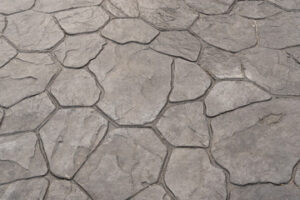Stamped concrete refers to a decorative form of concrete that is patterned and textured to resemble other materials such as stone, brick, slate, cobblestone, and wood. It’s often used for patios, walkways, and driveways.
While stamped concrete can be applied to existing surfaces, it’s more commonly poured when new construction occurs. It’s a great alternative to pavers and slabs.
When it comes to boosting your home’s curb appeal, few projects rival a new patio. They create a place to relax and hang out, entertain guests, and handle outdoor cooking and cleaning tasks. Patios also add value to your property and help it stand out among other homes for sale.
There are many different options for laying a patio, including gravel, asphalt, brick, and concrete slabs. The latter is a popular choice for homeowners because of its durability and affordability. However, if you want to take your patio up a notch in style, consider adding stamped concrete. It offers a variety of color and pattern options, which can make it look like other materials such as stone, slate, brick, or wood.
Stamped concrete is poured and then imprinted with a unique design before it hardens. The imprinting process can emulate the look of slate, stone, brick, or cobblestone, and it allows you to customize your patio with a color scheme that fits your home’s aesthetic. You can even use a blend of colors for a more natural look or choose a single color with contrasting borders.
If you decide to lay a stamped concrete patio, be sure to hire a professional contractor who is experienced in the technique. They will know how to mix the concrete correctly, position it in place, and ensure that it’s level before they begin stamping. In addition, they will be able to suggest the best type of stamp for your project and provide tips on how to maintain its beauty over time.
In addition to its beauty, stamped concrete is slip-resistant and easy to clean. It’s also durable, which means that it can withstand heavy foot traffic and harsh weather conditions. However, it’s important to be aware of the downsides of this material, such as its susceptibility to cracking. If you notice any signs of damage, such as small cracks or fading color, it’s crucial to get them repaired right away.
Versatility
Concrete is a popular building material that lends itself to numerous visual designs. As a result, many people opt to use it for decorative purposes in their homes and commercial properties. For example, they may decide to have it installed as a patio deck, walkway, or garden curbing. These improvements can be crafted in an attractive array of colors and patterns that mimic other materials, such as stone, wood, or brick. This versatility makes it an ideal choice for a wide range of landscape projects.
As a general rule, stamped concrete is more affordable than masonry options. It is also more durable. Moreover, it doesn’t crack as easily as natural stones or pavers. As a result, it has required fewer repairs over the years. Despite this, it is important to remember that stamped concrete does require some maintenance in order to look its best. Therefore, it is advisable to hire a professional to perform regular cleaning and sealing treatments.
In addition to enhancing the aesthetics of your property, stamped concrete is also functional. For example, if you have a pool, it’s crucial to build a safe and slip-resistant surround. The best way to achieve this is by using stamped concrete, as it can be made in a variety of patterns that are both visually appealing and slip-resistant.
Another benefit of stamped concrete is that it can be shaped to fit the contours of your property. This means that you can avoid the expense and hassle of installing a separate fence or gate around your property. Furthermore, you can save money by avoiding the cost of purchasing and installing a lawn mower shed or other equipment that can damage or scratch the surface.
Although the majority of people opt to use stamped concrete outdoors, it can be used in interior applications as well. This type of decoration can enhance the look of walls, floors, and ceilings. It can also be used to replace the finishes of noble materials in a quick and effective manner.
The versatility of stamped concrete is a key selling point for homeowners and business owners. It is an excellent choice for pool decks, patios, driveways, and walkways. However, it should not be used for substantial weight-bearing surfaces, such as an RV pad or driveway. It is also not suitable for areas exposed to salt and other deicer additives, as they can damage the surface.
Durability
Stamped concrete is highly durable and costs less than other paving materials. It also offers a better return on investment than most other home improvement projects, adding up to 80 percent or more to your home’s value. But it’s important to note that you should hire a professional for the installation process. There are a number of steps that must be completed precisely in order to achieve the best results, and mistakes can be costly to fix.
It’s a good idea to avoid using deicing salts on stamped concrete during the winter, as these can damage the surface and cause it to crack or chip. Concrete is a porous material, and moisture from snow and ice can seep into the tiniest cracks and expand when temperatures drop, causing them to crack further. It is also a good idea to get a professional to seal the concrete every two or three years to keep it looking its best and protect it from the elements.
Because of its textured surface, stamped concrete is usually more slip-resistant than conventional concrete. However, it can still be slippery if it is wet or if a film-forming sealer has not been applied. If you’re considering stamped concrete for a high-traffic area, talk to your contractor about adding a non-slip additive to the concrete mix.
Unlike pavers or slabs, stamped concrete is not an ideal option for permeable pavements, as it will trap water and cause flooding and standing pools of water after heavy rains. However, it is an excellent choice for use in places like driveways and patios where a permeable surface is not necessary.
The color of stamped concrete will fade over time, but it is easy to restore its original appearance with periodic cleaning and resealing. If you are worried about the color fading, talk to your contractor about using a color hardener in the concrete mix or staining it afterward. In addition, you can use an acrylic sealer to extend the life of your concrete and prevent it from becoming dull. For the best results, use a high-quality acrylic sealer that is specifically designed for concrete.
Maintenance
Concrete is a versatile building material that can be used to imitate the look of natural stone, slate, or brick. It can also be stained, allowing for even more design options. Stained concrete is more durable than paved stone, and it requires less maintenance. It is also less expensive than those other natural building materials and, when properly cared for, can last a lifetime.
Regular sweeping, mopping, and scrubbing with soap and water are sufficient for the majority of stain removals on stamped concrete. For oil and grease, an alkaline degreaser can be used to remove tough stains. Soaking rust stains in white vinegar can also help eliminate them. If these measures do not remove a stain, you should contact a professional to seek out additional treatment options.
Decorative concrete should be resealed at 18- to 24-month intervals. This will protect the surface from abrasion and water penetration, inhibit stains, and enhance color and sheen. Your contractor should recommend the best sealer for your project.
While your contractor is applying the sealer, it is a good time to sweep the entire area and remove any debris that may have accumulated. Avoid letting materials like tarps or fallen leaves pile up on your new surface, as moisture trapped under these items can lead to mold and mildew growth.
It is important to protect your investment and maintain the beauty of your stamped concrete. It is essential to prevent damage from chemicals, harsh weather conditions, and excessive foot traffic. It is also a good idea to place non-slip mats in areas of high foot traffic or near pool decks. During the winter, use plastic shovels instead of metal to remove snow and ice from your stamped concrete surfaces. Do not apply deicing salts to your stamped concrete, as they can cause surface damage and discoloration. Finally, it is a good idea to add an anti-skid additive to your sealer for added safety and durability. If you follow these simple maintenance steps, your stamped concrete will remain beautiful for years to come.
